
22.02.2018
By Melinda Kozel, Omaha, Nebraska, USA
December 7, 2017 – February 24, 2018
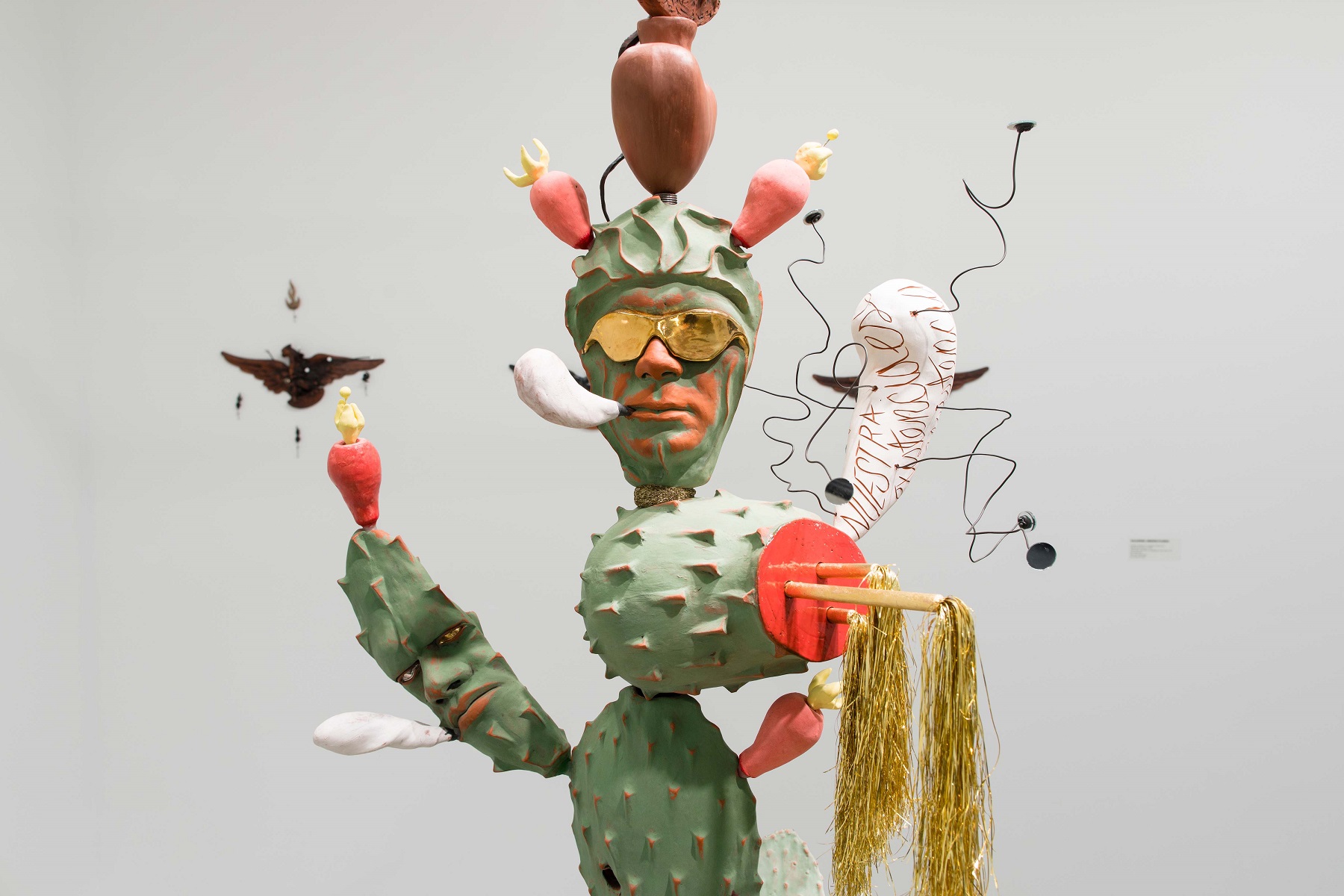
The Bemis Center of Contemporary Arts debuted Monarchs: Brown and Native Contemporary Artists in the Path of the Butterfly this last winter in Omaha, Nebraska. The exhibit, curated by Risa Puleo—the first to hold title as Curator-in-Residence at the Bemis Center—seeks to address the contemporary result of a long and woven history of movement, as told through themes of migrations, inheritance, and transformation.
Monarchs celebrates the full breadth of what indigenous and migrant populations brought to this country and how their contemporary descendants create inspired art that honors a tradition of craft and ceremony while looking forward and setting the tone for a new sense of tradition.
In the first gallery we find those artists who focused on migration amplified more than just the literal journey at hand. While Wendy Red Star and Francisco Souto referenced the topographical, tourist and community-pride-related landmarks that chronicle the experience of indigenous populations others like Cannupa Hanska Lugar, Marty Two Bulls, Jr and William Cordova saw this path lead to immobilization. Whether displaced by colonialism or deportation or trapped by rising alcoholism and poverty this experience is illustrated by a collection of debris from consumerist surroundings is embellished with feathers and ceramic glaze—the faint traces of a culture buried under the weight of vice and exploitation while still trying to uphold distinction.
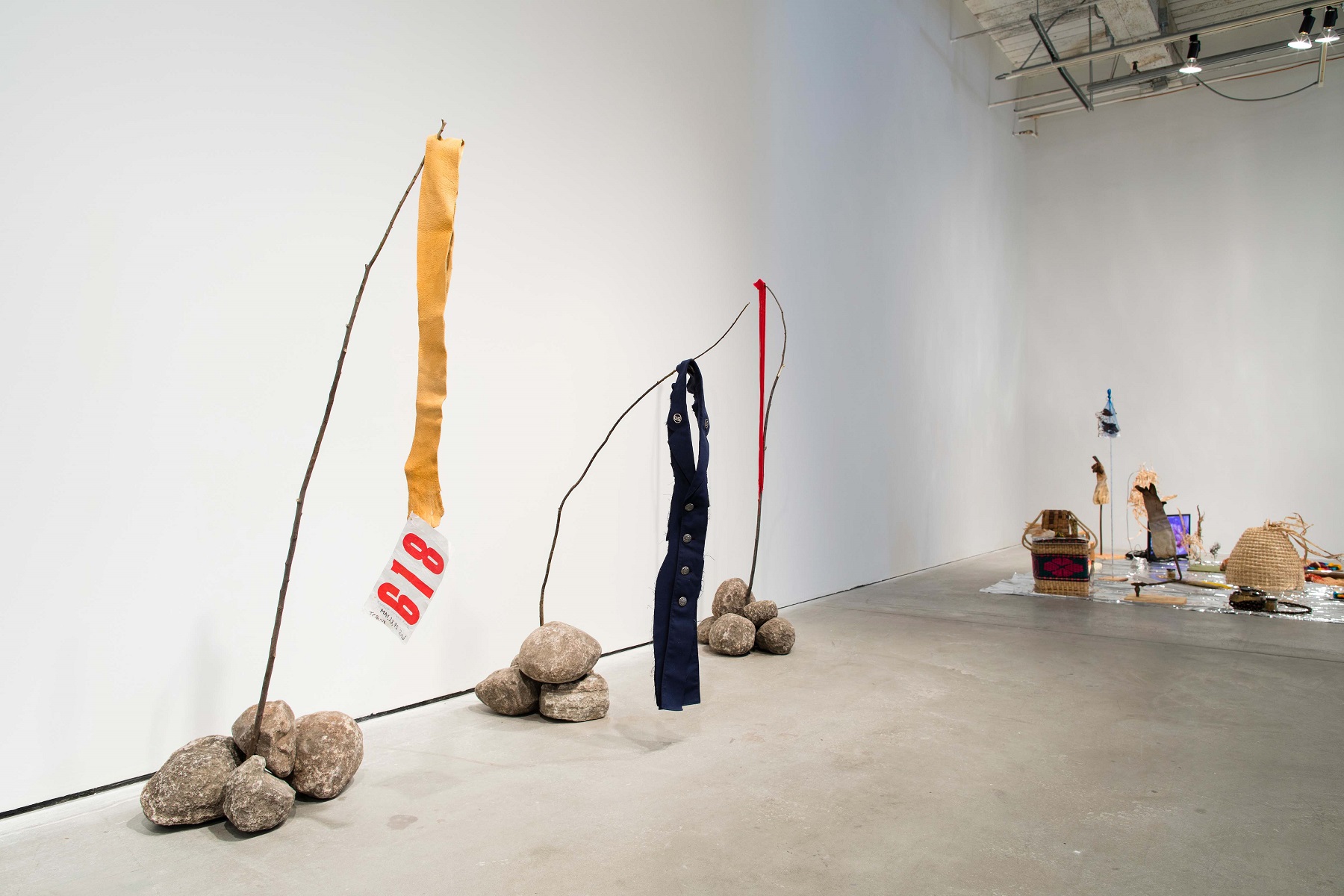
Additionally, this idea of displacement reiterates the inspiration of the butterfly. The journey that has been made doesn’t account for literal boundaries. When the land belongs to you—as is reinforced in these artists’ cultural philosophy—you are the monarch of that land and you have the right to reclaim it. So, when these artists speak of migration, at times it reflects a migration and displacement forced by neocolonialism to impose capitalist interests. As we’ve watched people who are part of our country, in every sense of the word, be deported or have land seized for pipelines, we realize that the systems that decided the existence of brown and native persons were an inconvenience are still assigning value based on what the system has to gain.
The monarch butterfly, in fact, as a species attempts a 3,000-mile journey from Mexico to Canada twice a year but it is always a different generation of butterflies from those which started this trip that have to complete it. In much the same way, the experience of the populations of people who make these treks does not end where they settle. The journeys of native communities and immigrant people evolve over time as their personal stories, common history, identities and culture are passed down and enhanced by the experience of those that come after. For example, we cannot simply describe people from Mexico as having one set of interests or aesthetics as they are continually representing and reinventing themselves according to their circumstances in new and profound ways. We look at the past, present and future of Mexico and its people to understand who they are.
Following Margarita Cabrera’s swarm of copper butterflies that literally fly one room to another, the second gallery greets artists representing ideas of inheritance who amplify the idea of building on their past into the present. Their work utilizes symbolism, style and material that highlights a cultural memory as it applies to contemporary experience. Craft and trade—a stronghold of economic history for these populations—reinforce an awareness of what is lost over time. Artists such as Nancy Friedemann-Sánchez and Harold Mendez honor the labor and technique that built their history using ritual, technology and abstraction and present a new idea of what native history is and means in the current sociopolitical context of the US. A clear example of this is the sarapes by Ivan Lozano composed of digital images and assemblages of geographically specific dirt showing us that history is constantly in the making.
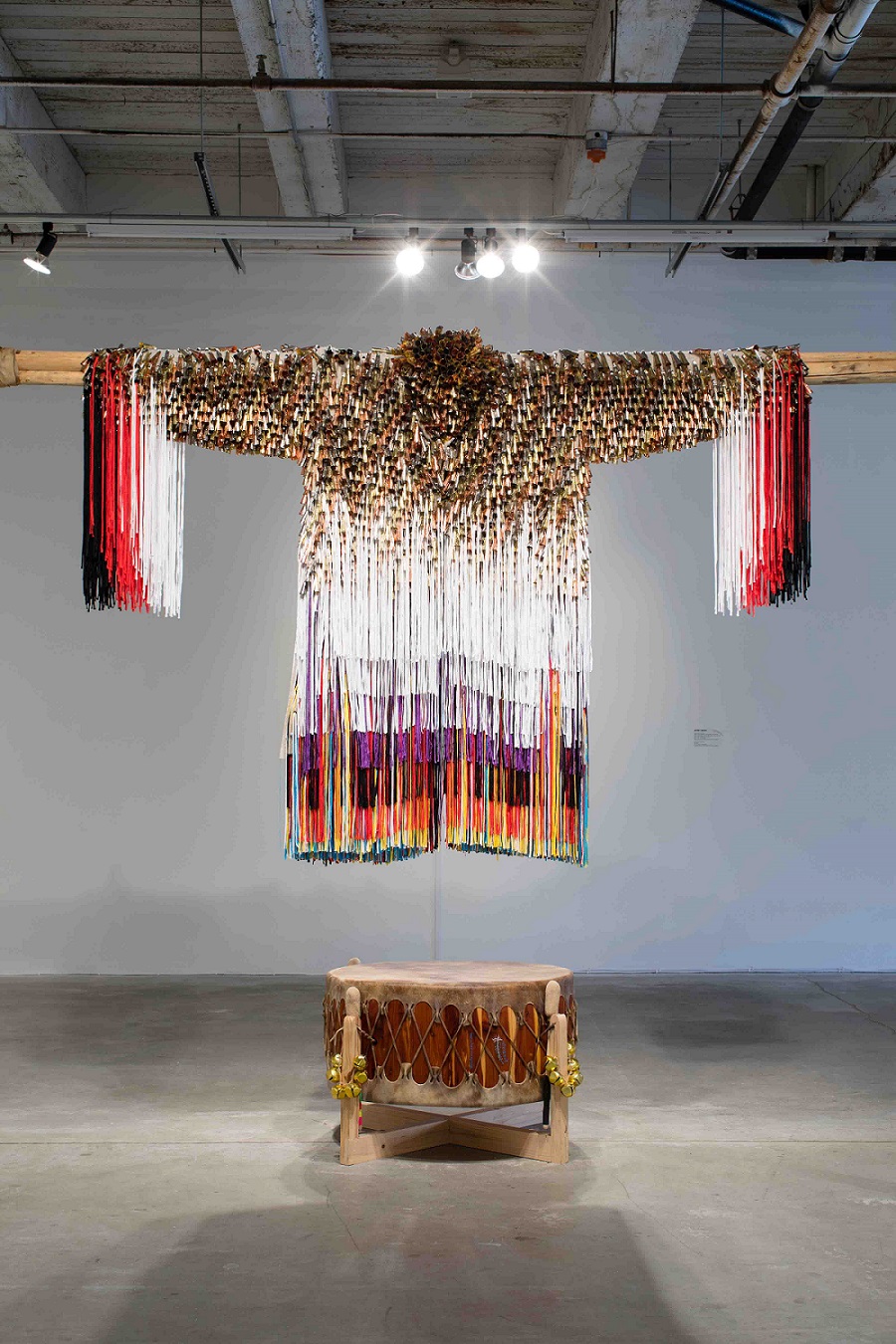
Finally, the artists who examined transformation were inspired by ritual and ceremony as an impetus to the idea of the journey we make as people—as a culture—by how our past and present affect our ability to grow and engage.
Many of these artists also used traditional craft and textile in their work, as performance and experience diverge from shared ideas of fear, grief and control. Work by Omaha artist Sarah Rowe, Soil depicted a series of handkerchiefs all stained with a ring of oil in such a uniform way it gives the impression that the oil was on the embroidery hoop to begin. This piece helped me understand that a history laced with oppression or displacement always leaves an indelible mark that will impact you profoundly no matter what you try to do. This imprint becomes inherited or even instinctual.
Interestingly, the idea of record-keeping was prominent; not only as literal documents and a way of measuring time and experience, as in the case of the rainbow archive Map Pointz of Guadalupe Rosales around 90s Latino party crew and rave scene in LA, but also as the living reminder what this history means for the future, as in happens in Josh Rios and Anthony Romero’s Is Our Future a Thing of the Past? around Chicanx futurism.
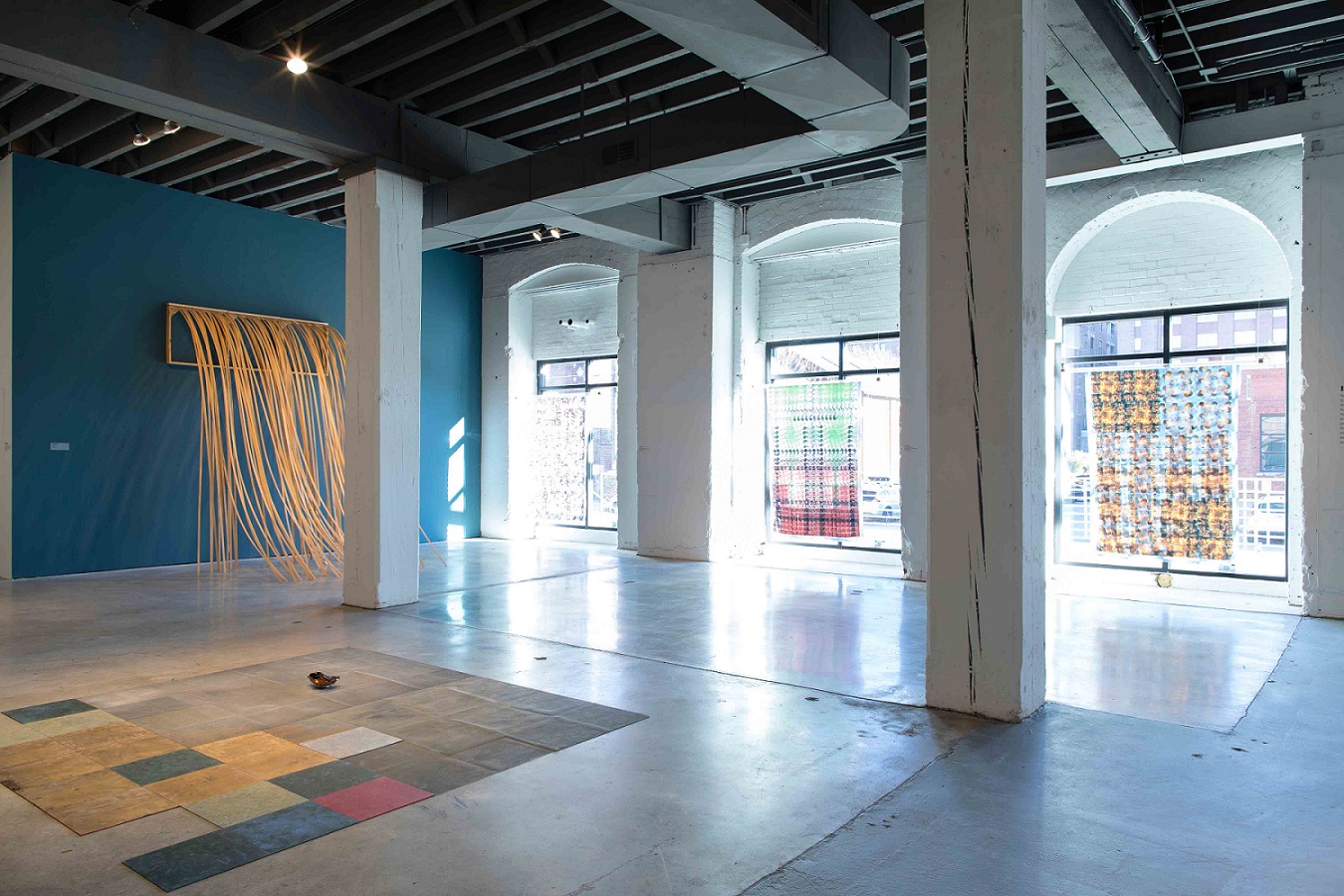
As the legacy of our interaction with migrant or indigenous groups accrues treatises, proclamations, laws and bans, the story of division and arrangement becomes a backdrop for the way these populations have experienced history in the country we shared. The words of the various treaties displayed in the installation Broken Treaty Quilts by Gina Adams illustrate the indelible mark of oppression and marginalization that these actions leave in the legacy of these communities and the way their lives are affected from that point forward. If a quilt is literally the assemblage of multiple pieces and stitches, the historic quilts of the experiences of black and brown communities are constructed by the multitude of its components, a big part of which are not their decision.
Contrasting the more traditional medium of quilting, video played a prominent role in many artists’ work. Videos place the artist or their subject at the center of the work forcing you to see them and their humanity for what it is and not a packaged representation of a vast culture build for hegemonic means. Donna Huanca’s piece, Dressing the Queen follows the layering of many articles of clothing and fabrics on a woman to the point where her face is barely seen then subsequently stripped from her. I imagine the responsibility of having to represent a culture, a race, a religion, a gender or philosophy feels to be such a weight that it feels that you don’t matter as a person—it only matters how others can gather a narrative from you. Soon after, the audience that was captivated by your exoticism and struggle has moved on and you are left, once again, on your own.
Monarchs: Brown and Native Contemporary Artists in the Path of the Butterfly offers something that people in Nebraska may not fully realize: the idea that First Nations people and Latinx citizens and immigrants exist beyond a history textbook, a talking point or a political target. At the same time, the exhibition evidences how we often nobilize a rich culture and its historic contribution, such as Native American’s, to condense it into a packaged identity that homogenizes and devaluates the plurality and diversity that characterizes these cultures.
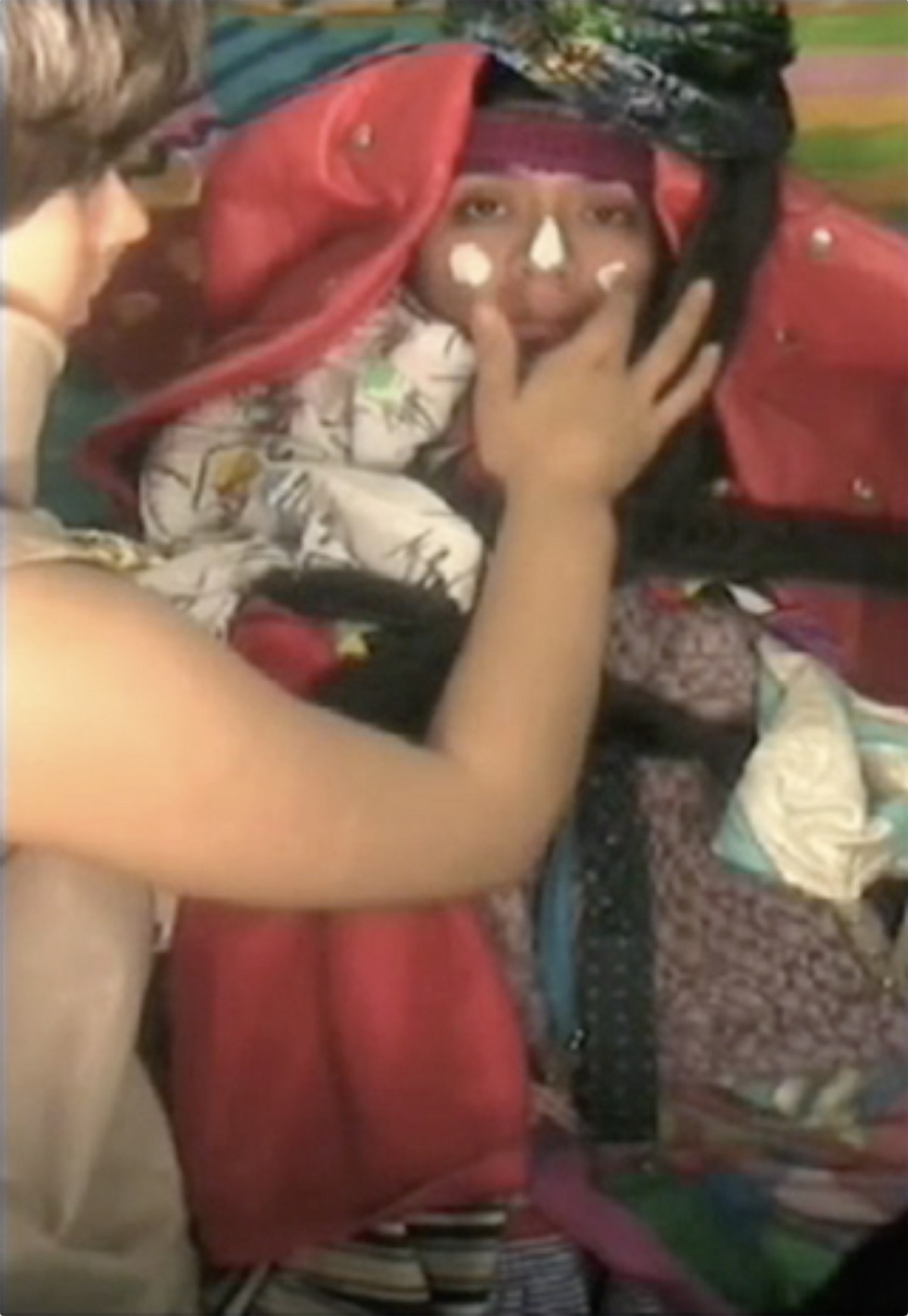
Much like the monarch butterfly, the journey that defines the existence of the communities that this exhibition fosters, is complicated, persistent, transformative, fragmented and a little bit of a miracle. They can’t do it alone, it doesn’t stop with them and they will always come out the other side changed, a transformation that never stops. What I get from this represented journey, as someone that has never experienced this reality, is the ability to understand the dichotomy of value and struggle that this complicated legacy represents to immigrants and First Nation communities.
The monarch butterfly serves as a living embodiment of the connectivity we have as people. The indigenous cultures in our country crossed boundaries to fulfill an intrinsic purpose and they have depended on each other to fully realize that purpose. The disruption of their natural surroundings and the threat to their cultural identity still persists as environmental, civil and human rights remain a vivid target. How we honor their paths connects greatly with how we understand our responsibility in preserving their tradition, lifting their voices and being stewards to the land.
Comments
There are no coments available.